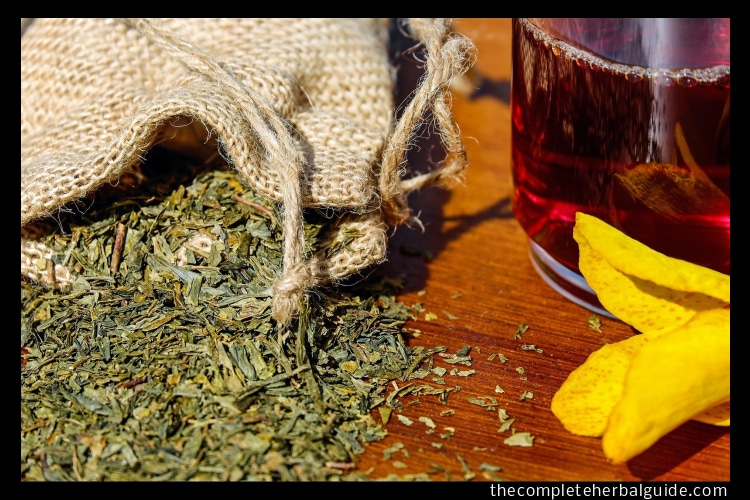
How To Keep Joints Healthy With Ayurveda?
Table of Contents
How To Keep Joints Healthy?
Many of us experience occasional joint discomfort or stiffness, normally associated with wear, tear and stress on the joints. Considering our current lifestyle joint pain is not an aging issue anymore. So it is a good idea for all of us to focus on ways to maintain joint health. Ayurveda has much to offer with lifestyle suggestions and herbal supplements to support healthy bones and joints.
Poor Circulation
One type of joint issue is associated with poorly-nourished joints, low bone density or overall weakness. This can be due to weak circulation associated with Vata imbalance. When circulation is poor, our joints and the surrounding connective tissue can be dry and lacking the nutrients needed to maintain good mobility.
Vata Imbalance
When the aspect of Vata that governs the circulation and nerve impulses (Vyana Vata) is aggravated, an individual’s circulation, metabolism and ability to absorb nutrients from food is weakened. This causes a chain reaction and the bone and connective tissues do not receive enough nourishment, eventually leading to degeneration. Additionally, the imbalance of Vata and the weakened system create a drying effect on a sub-dosha ofKapha that governs lubrication of the joints (Shleshaka Kapha). When this happens, the joints are not properly lubricated, leading to increased discomfort and diminished flexibility.
Food And Lifestyle Habits To Pacify Vata
In Ayurveda, “food is medicine”, so a diet tailored to our individual unique needs is recommended. There are six tastes, which form the basis of a healthy diet. Inherent within each taste have certain properties of nature that have an effect on the three doshas: Vata, Pitta, and Kapha (vpk). Because each taste affects Vata, Pitta, and Kaphadifferently, all six tastes should be included in every meal — or at least once every twenty-four hours — for optimum balance.
When joint issues occur, it is most important to balance Vata. Favor sweet, sour and salty tastes and eat fewer bitter, astringent and pungent foods.
Sweet: Natural sugar in moderation; naturally-occurring sugars in milk, butter, rice, breads, and pasta.
Sour: Yogurt, lemon, and cheese
Salty: Self-explanatory
Bitter: Green leafy vegetables and turmeric
Pungent: Spicy foods, ginger, hot peppers and cumin
Astringent: Beans, lentils, and pomegranate
Other healthy foods to include in a Vata-reducing diet are grains such as oats, quinoa, rye and amaranth. These can be cooked in water with a little ghee added. Freshly-cooked organic vegetables; split mung daal soup; and sweet, organic juicy fruits are great forVata. It’s important to eat a diet rich in calcium, including high-quality organic milk and vegetables such as spinach, kale, asparagus and root vegetables.
Vata Balancing Routine
- Aim to go to bed before or close to 10 p.m.
- Avoid too much stimulating activity at night, such as watching TV right before bed.
- Eat a main meal at noon and a light, nourishing dinner.
- Engage in some mild exercise such as walking for half an hour a day.
- Practice Transcendental Meditation or other stress-reducing meditation twice daily to calm the mind.
- Daily abhyanga — sesame oil or vata oil ayurvedic self-massage helps settle Vata.
Herbs To Heal Vata Imbalance
The herbal formula for this type of joint issue is called santarpana, which means nurturing. Based on this nurturing theory of santarpana, a precise combination of nourishing herbs like tinospora, amla and ashwagandha provides nourishment to bones and joints and supports the bone tissue and Shleshaka Kapha.
Calcium support improves calcium absorption in bones, supports healthy nerves and joints and nourishes the bones. Avoid caffeine and a highly acidic diet as they increase the excretion of calcium and magnesium from the urine, depleting the body’s natural calcium resources.
Toxin or Ama Accumulation
This type of joint issue is associated with ama (digestive toxins) in the joints and is characterized by a heavy, stiff feeling. At its core is weak digestion, due to either improper diet and lifestyle or seasonal imbalance. Sometimes weak digestion can be triggered by a bout of cold, humid weather. If nothing is done to dissolve the ama at this preliminary stage, it stays in the joints for a long time. Eventually, this ama gets converted to amavisha, an even more toxic form of ama that is more irritating and reactive in nature.
Amavisha causes the joint to become swollen and uncomfortable. In this kind of environment, ama also mixes with the natural lubricating fluids in the joint governed byShleshaka Kapha, forming an extremely sticky, toxic substance known as Shleshma.Shleshma restricts mobility and disturbs the circulation in the joint. If the ama, amavishaand Shleshma stay unattended in the joints for a long time, eventually the structure of the joints and the bone itself is compromised. This stage sometimes is irreversible.
Food And Lifestyle Habits To Reduce Ama
An ama-reducing diet is made up of warm, light, dryer foods that are easy to digest. Nourishing soups and warm, freshly cooked grains and vegetables prepared with a stimulating spice mix and spices, to stimulate digestion are the mainstays of the ama-reducing diet.
A very effective way to purify the joints is to drink lots of Ama Pachana water (water infused with ama-reducing spices) to support strong digestion and elimination.
Ama Reducing Routine
- Avoid long naps during the day — not more than 10 to 15 minutes.
- Try going to bed early, before 10:00 p.m., so you can rise before 6:00 a.m.
- Exercise for half an hour every day and choose a type of exercise that you enjoy. A brisk walk is ideal for most people, along with yoga asana stretches, although if you have a more Kapha dosha you may need more vigorous exercise to stay in balance.
Herbs For Ama Reduction
To naturally lubricate the joints, massage over the joints. Ayurvedic oils likeMahanarayan Oil, is a blend of sesame oil, milk, and 56 herbs that is revered in ayurvedic texts for its effectiveness in increasing circulation around the joints. Another herbal blend includes Mahavishagarbh Oil, a sharp, hot, penetrating oil that penetrates the surface layers of the skin to target ama in the joints, liquefy the impurities and restore natural balance.
Addressing deep-rooted imbalances is the key. It takes a great amount of effort to get rid of ama that has circulated throughout the body and settled in the joints. So once we have reduced ama in the body, we should be very careful not to allow its accumulation again.
A simple tongue examination in the morning can tell you if something is amiss. If you are eating right and your digestion is strong, it should NOT be coated with a creamy, sticky substance. Also if you are eating right, you should not experience any significant post-lunch fatigue.






